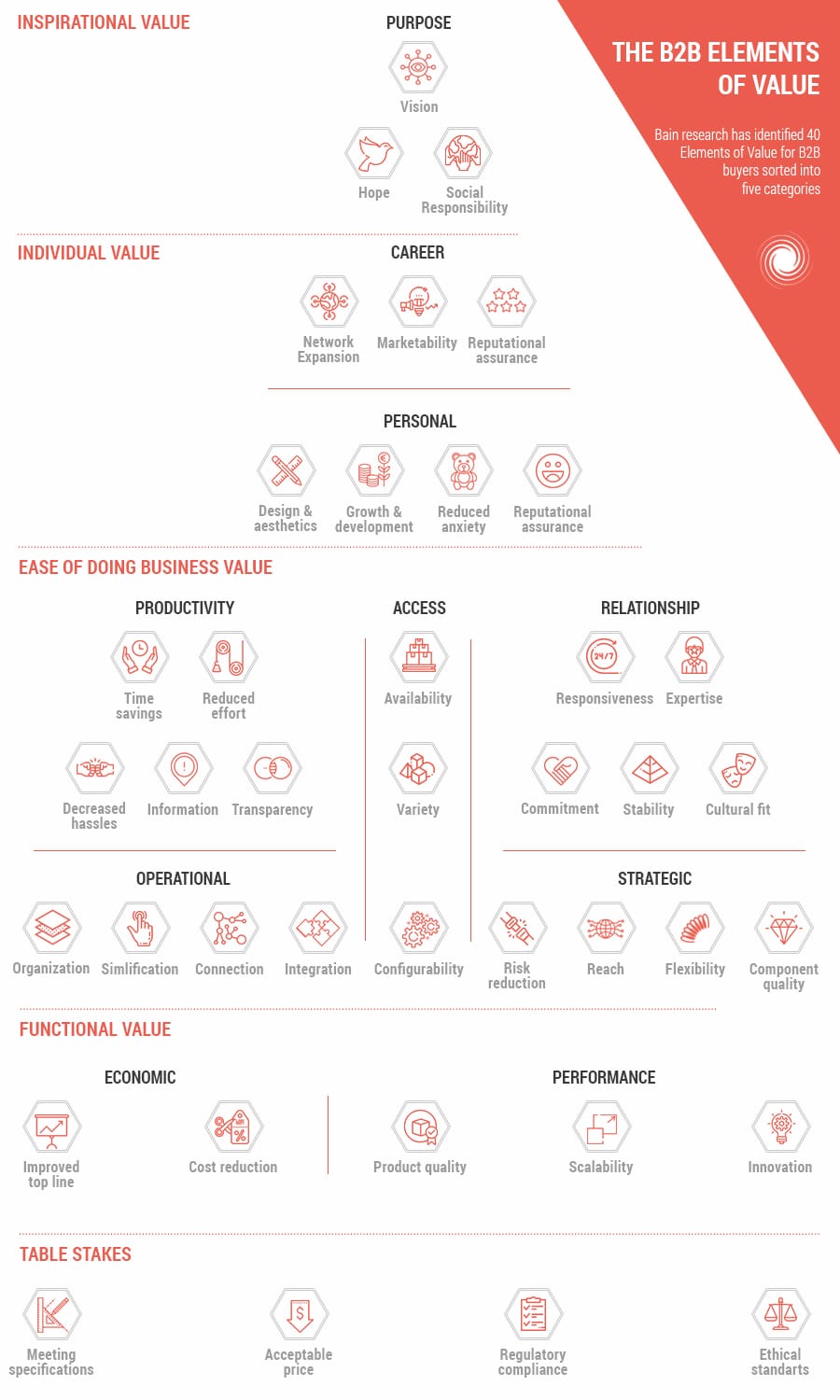We’ve discussed the trouble with buying in B2B and the reasons Why Decision Makers Drown from a theoretical standpoint. In this post, we’re ready to explore how to remedy the decision making paralysis most B2B executives deal with on a daily basis. The problem exhibits itself in various ways, each of them causing a breakdown in the decision-making process. Here are the facts:
1.) 83% of buyers make use of digital channels throughout the purchasing process (Gartner). This means that decision-makers accumulate large amounts of information as they travel through the sales pipeline.
2.) Unless an utterly revolutionary product or service just hit the market, there will always be a plethora of similar offerings to choose from. As a result, of all the offers on their plate, buyers will always narrow down to at least two different, but equally beneficial options. Statistics show that they will most likely experience buyer’s remorse after making their choice.
3.) B2B buying is hard particularly because it’s a subject to inner conflict. To make a decision, an executive needs to overcome the fear of negative consequences, yet certainty about a perfect deal doesn’t exist. So, the thin thread between the wish to buy and the fear of failure often breaks the deal before the decision maker reaches the pipeline and a purchase is often postponed.
4.) Believe it or not, corporate sales are personal as much as they are professional, because they reflect both the corporate and the personal values of the buyers. Bain’s research identified 40 ‘elements of value’ that impact the buying process.

5.) Gartner’s research shows that B2B purchasing is a group activity, with an average of 6.8 people involved. This makes consensual decision-making problematic. The whole group, collectively, can be subject to overchoice.
6.) Executives are pressured by both a lack of time and the sheer rate of technological development. They have enough to contend with before the demands of the company’s procurement. Nevertheless, they still have to use up their valuable time weighing up options.
7.) Put all of this together and keep in mind that the process is perpetuated. B2B buyers are bullied, battered and buffered by conflicts of wishes, feelings, thoughts and, most of all, information overload in our digital era. Sellers, take heed!
The price of choice
The losses business can suffer from overchoice are impressive – ten years ago, Harvard Business Review put the price at $900bn per year! Today, technological change is so fast and competition so fierce that any missed opportunities for business improvement or cost cutting can literally mean life or death – and whilst the pace of change keeps increasing, decision-makers aren’t keeping up.
There are thousands of tools out there intended to lighten the burden of marketing and sales departments, but companies need to think of the tools that aid the buyer sieve through all content?
If you do not have the best available tools for your marketing teams, it means they are spending unnecessary time on mundane, boring tasks that are ineffective in the long run. Consequently, organization(s) will run less efficiently and lose opportunities.
Attacking content overload and decision paralysis in B2B is now all about helping the buyer, not about fantastic infographics.



